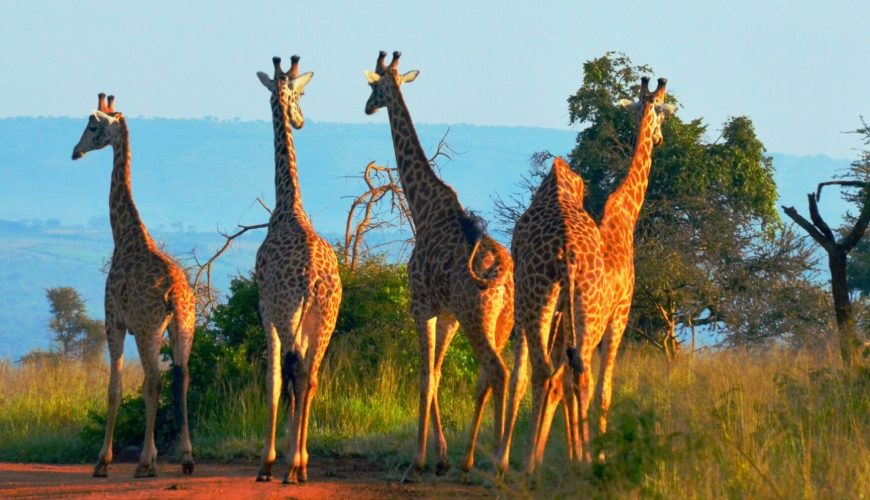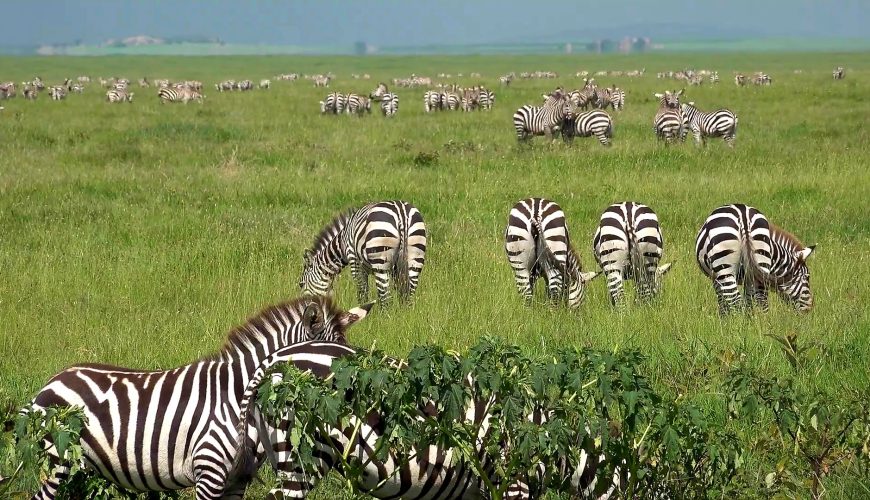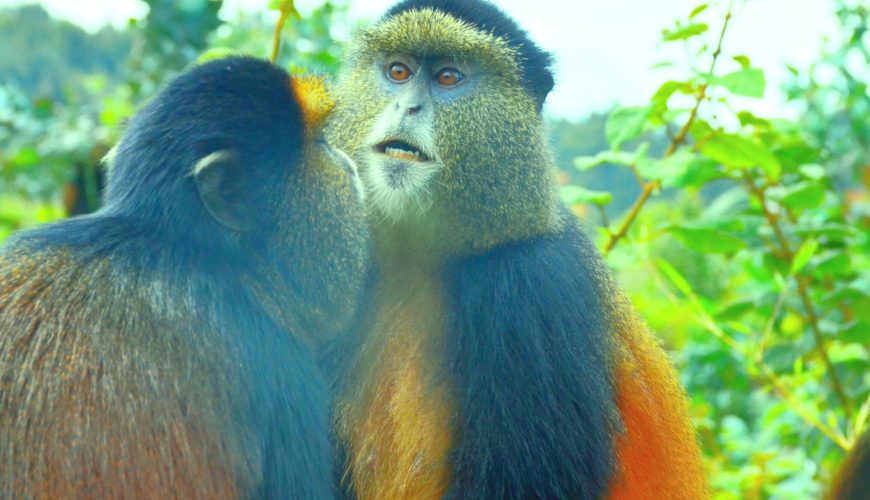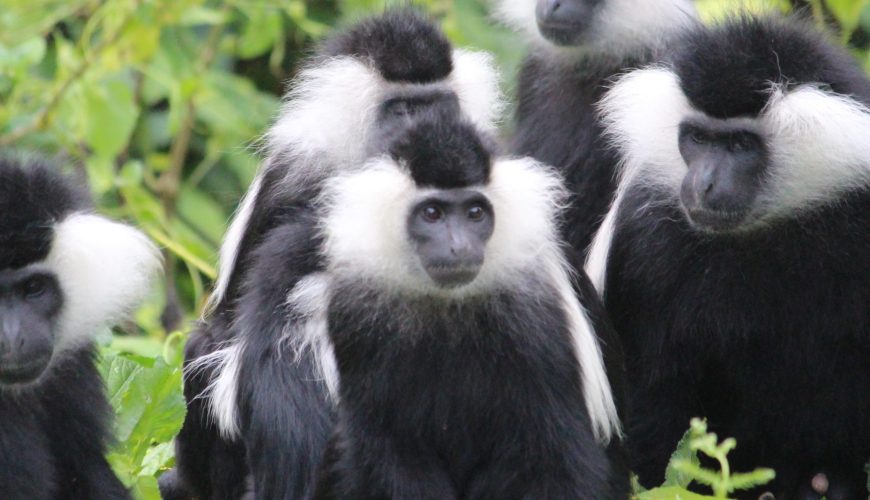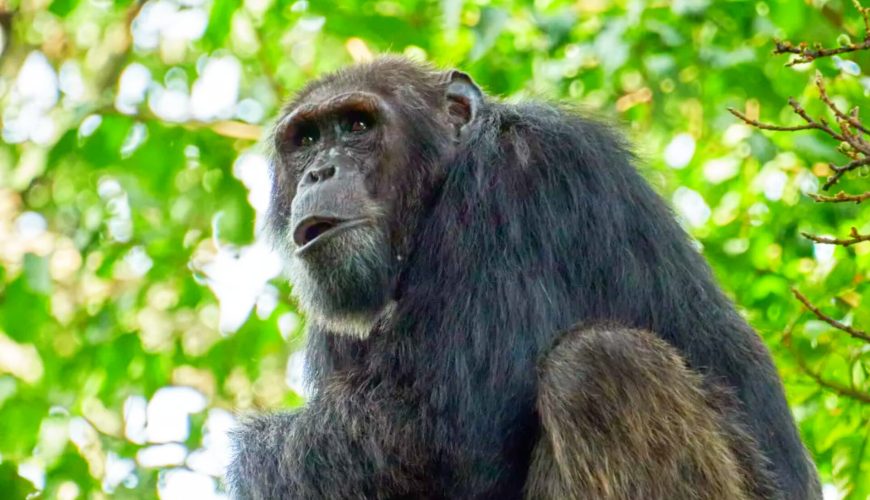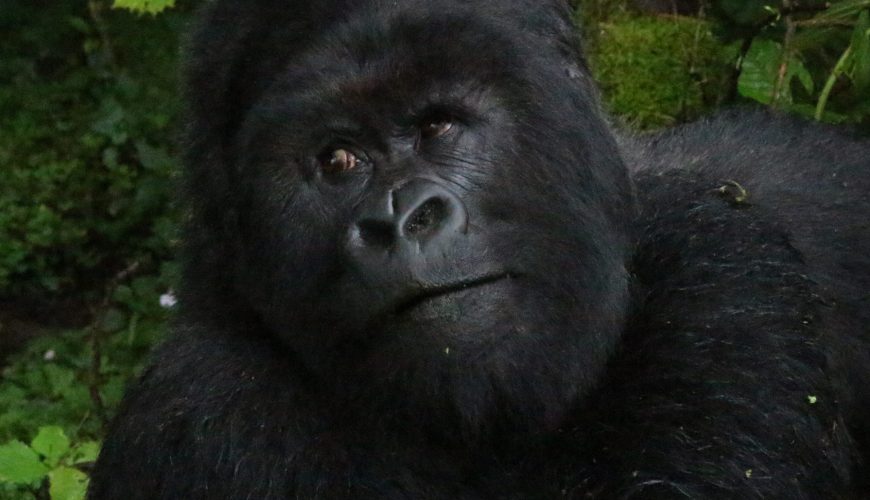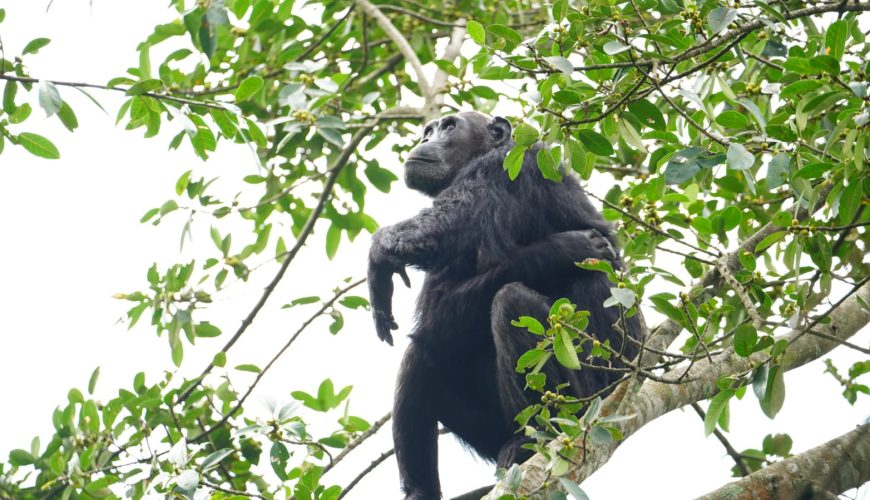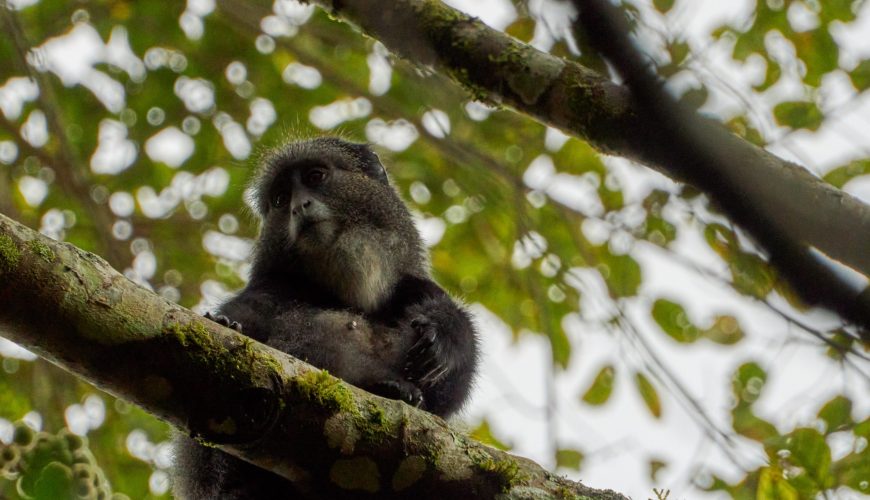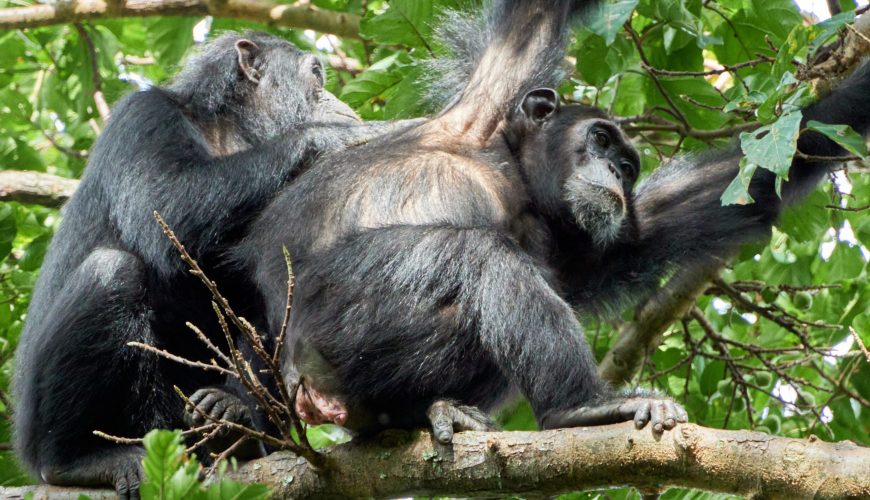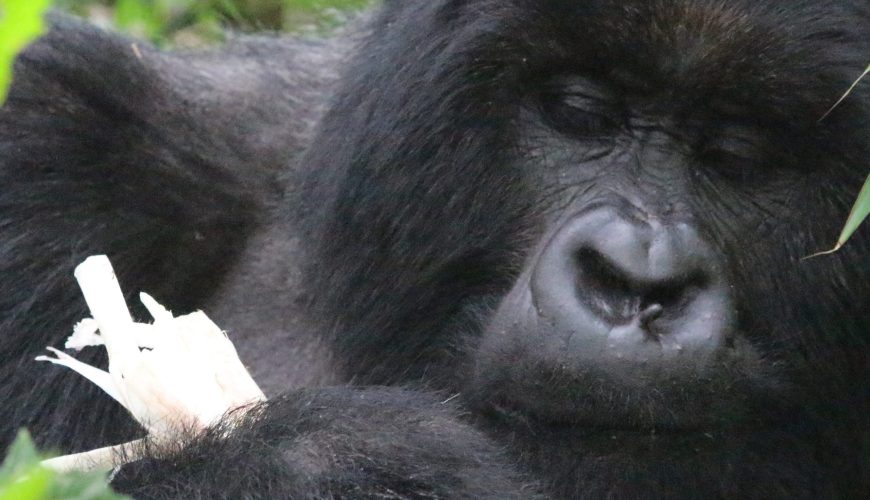7 Unforgettable Tips for Chimpanzee Trekking in Tanzania, Rwanda and Uganda
7 Unforgettable Tips for Chimpanzee Trekking in Rwanda and Uganda Chimpanzee trekking is a thrilling and immersive experience that offers a rare glimpse into the lives of our closest relatives in the animal kingdom. Rwanda and Uganda are two of the best destinations in Africa for this adventure, boasting lush forests and well-managed conservation areas. To make the most of your Chimpanzee trekking experience, here are some essential tips: Choose the Right Destination Rwanda: Nyungwe National Park is the primary destination for Chimpanzee trekking in Rwanda. This vast and ancient rainforest spans over 1,015 square kilometers and is one of Africa’s most biologically diverse regions. The park is home to over 13 primate species, including chimpanzees, colobus monkey, sliver monkey and grey-cheeked mangabey are use to the tourist, 345 bird species includes 31 endemic to Albertine Rift, orchids, and butterflies. Its well-maintained trails and canopy walk offer visitors unique opportunities to explore the forest’s beauty and wildlife. Uganda: Kibale National Park, often referred to as the “Primate Capital of the World,” is Uganda’s premier Chimpanzee trekking destination. Spanning approximately 795 square kilometers, the park is a lush tropical rainforest teeming with life. It is home to 13 primate species, including over 1,500 chimpanzees, making it one of the best places in Africa to observe these intelligent creatures. The park also boasts a variety of ecosystems, from wetlands to grasslands, and is a haven for birdwatchers with over 375 bird species recorded. Other notable locations for Chimpanzee trekking in Uganda include Budongo Forest, Kyambura Gorge, and Kalinzu Forest. Tanzania: Gombe Stream National Park, famously associated with Dr. Jane Goodall’s groundbreaking chimpanzee research, is one of Africa’s most iconic destinations for chimpanzee trekking. Covering about 35 square kilometers along the eastern shores of Lake Tanganyika, the park is a mixture of tropical forest, grassland, and woodland, providing a unique habitat for primates. It is home to several chimpanzee communities that have been studied by Dr JG since 1960 , offering visitors an extraordinary chance to observe their social behaviors up close. In addition to chimpanzees, Gombe shelters olive baboons, red colobus monkeys, and a remarkable diversity of bird species, making it a rich destination for primate and nature enthusiasts alike. Book Permits in Advance Chimpanzee trekking permits are limited to ensure a sustainable and low-impact experience. Book your permits well in advance, especially during peak seasons (June to September and December to February). The cost of permits varies by country and location, so plan accordingly. Wear Appropriate Gear The right clothing and equipment can make a significant difference: Clothing: Wear lightweight, long-sleeved shirts and trousers in neutral or green colors to blend with the environment and avoid startling wildlife. A rain jacket is also highly recommended for sudden weather changes. Footwear: Sturdy, waterproof hiking boots are essential for navigating uneven and muddy terrain. Accessories: Bring a wide-brimmed hat, sunglasses, and a rain jacket to prepare for changing weather conditions. Pack Essentials Insect Repellent: Protect yourself from mosquitoes and other insects. Water and Snacks: Stay hydrated and carry energy-boosting snacks. Binoculars: Enhance your chances of spotting chimpanzees in the canopy. Camera: Capture unforgettable moments, but avoid using flash to minimize disturbance. Prepare for Physical Activity Chimpanzee trekking involves hiking through dense forests, often for several hours. Moderate physical fitness is required. Consider doing some light training or walking in the weeks leading up to your trip to build stamina. Follow Guidelines and Instructions Respect the rules set by park authorities and listen to your guide. Key guidelines include: Maintain a distance of at least 10 meters (33 feet) from the chimpanzees. Avoid direct eye contact, as it may be perceived as a threat. Do not eat, drink, or smoke near the chimpanzees. Refrain from making loud noises or sudden movements. Be Patient and Observant Chimpanzees are wild animals and may not always be easy to locate. Stay patient and attentive. Your guide will use their expertise to track the chimps by following vocalizations, nests, and footprints. Respect the Environment Do not litter or leave any waste in the forest. Stick to designated trails to minimize environmental impact. Avoid picking plants or disturbing wildlife. Consider Timing Chimpanzee trekking; Chimpanzees are most active in the early morning, so tracking usually begins at dawn. Plan to start your day early for the best chance of sightings. Support Local Communities Opt for lodges and tour operators that contribute to local conservation efforts and community development. Your visit can have a positive impact on both the environment and the people living nearby. Chimpanzee trekking in Rwanda and Uganda is a once-in-a-lifetime adventure that combines wildlife exploration with a deep connection to nature. By following these tips, you can enhance your experience with us while contributing to the conservation of these incredible primates. So pack your gear, prepare for an unforgettable journey, and get ready to create memories that will last a lifetime!
MAGICAL UGANDA WILDLIFE PARKS WITH 10 NP
Uganda Wildlife Parks offer amazing experience , Uganda is a landlocked country situated in the eastern region of Africa, is renowned for its ten national parks. These parks include Kibale forest, Mount Elgon, Rwenzori Mountains, Kidepo valley, Semuliki, Mgahinga Gorilla, Murchison Falls, Queen Elizabeth, Lake Mburo, and Bwindi impenetrable forest. The presence of these parks makes Uganda one of the most desirable safari destinations in Africa. These parks house a diverse range of wildlife, including endangered mountain gorillas, chimpanzees, 330 species of mammals, and over 1080 bird species. Bwindi National Park One of the best Uganda Wildlife Parks Bwindi National Park, situated in the southwestern part of Uganda, is one of the oldest tropical rainforests in the country and is highly diverse in terms of its flora and fauna. It boasts a plethora of plant species, with over 500 varieties, including some that have traditional medicinal uses. The park spans a total of 331 square kilometers and is home to more than 120 mammal species, including endangered animals like mountain gorillas, chimpanzees, elephants, primates, and antelopes. Additionally, it has over 350 bird species, with 23 being exclusive to the Albertine Rift Valley, such as the regal sunbird, yellow eye flycatcher, kivu ground thrush, Shelley’s crimsonwing, and purple breasted-sunbird, among others. Visitors to the park can enjoy a variety of activities, including gorilla tracking, gorilla habituation experiences, bird watching, and guided nature walks. Kibale Forest NP Uganda Wildlife Parks, Kibale Forest, situated in the western region of Uganda and to the north of Queen Elizabeth National Park, is a tropical rainforest that spans over an area of 795 square kilometers. Its altitude ranges from 1100 to 1600 meters above sea level. Kibale Forest is renowned as the world primate capital due to its small area being home to a plethora of primate species. Specifically, it boasts a total of 13 primate species, including Chimpanzees (as the main activity here, which are great apes and our close cousins), and more. Additionally, there are over 370 recorded bird species and 60 mammal species, such as antelopes, buffaloes, elephants, golden cats, mongooses, leopards, duikers, warthogs, bushbucks, and servals that can be found here. Visitors to Kibale Forest NP can engage in various activities such as chimpanzee tracking, chimpanzee habituation, nature walks, and bird watching. Murchison Falls NP. Murchison Falls National Park, situated in the western region of Uganda, spans over 3842 km2 and boasts the most potent tropical waterfall on the Nile River, the longest river in Africa. It provides a habitat for diverse wildlife, including 76 mammal species such as hippopotamuses, chimpanzees, crocodiles, waterbucks, elephants, giraffes, buffaloes, leopards, lions, Jackson’s hartebeest, Uganda cob, and warthogs, and 451 bird species. The park offers numerous activities such as the breathtaking Murchison Falls as major attraction, game drives, bird watching, guided nature walks, and boat cruises. Mgahinga Gorilla NP Mgahinga Gorilla National Park is situated in the southwestern region of Uganda, along the border with Rwanda and DRC, and spans approximately 35 square kilometers. It comprises three volcanoes, namely Mt Muhabura (with a height of 4127 m), Mt Mugahinga (3474 m), and Mt Sabyinyo (3645 m), and was declared a national park in 1991. The park is home to several wildlife species, including endangered mountain gorillas, golden monkeys, elephants, bushbucks, leopards, spotted hyenas, and duikers. The park offers several activities such as gorilla tracking, golden monkey tracking, bird watching, nature walks, mountain climbing, and cultural tours. Queen Elizabeth NP the of Uganda Wildlife Parks Uganda Wildlife Parks, Queen Elizabeth National Park is located in the western part of Uganda and spans approximately 1980 square kilometers, encompassing various habitats such as savanna grasslands, acacia woodlands, tropical forests, swamps, and volcanic craters. The park’s popularity is attributed to its rich biodiversity, including tree-climbing lions and opportunities for cultural exchange. The park is home to the “Big 4” (excluding rhinos), namely elephants, buffaloes, hippos, crocodiles, and waterbucks, as well as lions, hartebeests, giraffes, leopards, antelopes, warthogs, and chimpanzees. Uganda Wildlife Parks, the park features crater lakes Additionally to Uganda Wildlife Parks, the park features crater lakes that provide water and shelter to wildlife, and has recorded over 600 bird species such as the papyrus canard, shoebill, lesser flamingos, papyrus gonolek, African jacana, yellow wagtail, and grey-headed kingfisher. A tour of Queen Elizabeth National Park offers memorable experiences through activities such as tree-climbing lion tracking as the main attraction, bird watching, and, game drives, chimpanzee tracking, boat cruises, and nature walks. Moreover, tourists can participate in community and culture tours, storytelling, traditional dancing, and other activities.
MAGICAL PRIMATES TRACKING
What to know about primates tracking Primate tracking is a guided hike through a forest to observe and learn about primates in their natural environment. It can be a moderate or challenging walk and requires following park rules for safety. Watching primates in their daily activities, such as fetching food or caring for young, can be a memorable experience. This helps to understand the animals and their behaviors better, take pictures without flash, and share information. The hike ends at the starting point. Book here/ plan now Is it necessary to book primates tracking Yes, booking primate tracking experiences is usually important for several reasons: Is primate tracking possible for everyone? Yes, Primate tracking is possible for everyone. Sometime, It is a moderate hike that involves use of trails and off-trails thus tracking requires fitness. If you are sick you are not allowed to do primate tracking. A porter is recommended for primate tracking We are highly recommended to have a porter to carry your bags containing a bottle of water, rain gears, refreshment food, etc. The local porters are available from surrounding the park on 10$ per day excluding the tip. Socially and economically using the local porter is good for supporting the local community around the park and for conservation. Because all of them were poachers but now they are playing a big role in conservation. Where can I prefer to do Primates tracking? Tourists are used to do primates tracking in the equatorial region, especially in Rwanda, Uganda and DRC where they can find endangered mountain gorillas, chimpanzees and other primates. It is not easy to predict the preference of the tourist; most prefer to do primate tracking in Rwanda where which is the safest in the region and has luxury hotels, canopy walkway. Rwanda is also a smaller country, making it easier to travel around and access different national parks. The infrastructure in Rwanda is relatively well-developed, offering comfortable accommodation options and reliable transportation. Each country has its unique characteristics and considerations when it comes to primate tracking. Considering park permit for tracking for example Endangered Mountain gorillas park permit in Rwanda is 1500$ while in Uganda is 700$. For chimpanzee tracking, park permit in Rwanda is 250$ while in Uganda is 200$. However, Rwanda is the safest in the region. Tourist who wishes to cross those three countries they choice accordingly. Uganda offers a more diverse primate tracking experience, with options to see both gorillas and chimpanzees. The country also has other national parks and reserves where you can track different monkey species. Uganda’s advantage lies in its affordability compared to Rwanda, and it also has a rich cultural heritage to explore. The DRC is known as Congo, which is one of the most biodiverse parks in Africa. It is home to mountain gorillas, chimpanzees, and lowland gorillas. The DRC offers a more off-the-beaten-path experience, with fewer tourists compared to Rwanda and Uganda. However, the infrastructure and security situation in certain parts of the DRC can be challenging, so it requires careful planning and consideration of the current situation. Is it safe to be closer to the primate as well as feed them? Interacting with primates can be risky, and it is generally not safe to be too close to them or to feed them in the wild or in certain settings. While some primates may seem friendly or approachable, recommendable distance is 10m, it’s important to remember that they are still wild animals with unpredictable behavior. Here are a few reasons why it may not be safe to be close to or feed primates: Aggression: Primates, even seemingly docile ones, can become aggressive when they feel threatened or are protecting their territory, young, or resources. Approaching them too closely or offering food can trigger defensive behaviors, leading to attacks or injuries. Disease transmission: Primates can carry various diseases that can be transmitted to humans, Close contact, including feeding them, increases the risk of disease transmission, potentially leading to serious health issues. Human dependency: Feeding primates can create dependency on human food sources, disrupting their natural foraging behaviors and potentially leading to conflicts with humans or other animals in search of food. Don’t feed them once you do, they will gradually develop a habit of seeking food from the tourist. Conservation concerns: it is illegal and harmful to feed wild primates. It can disrupt their natural diet and behavior, interfere with their ecological roles, and contribute to human-wildlife conflicts. Due to conservation, discourage feeding wild animals to maintain their wild behaviors and ensure their long-term survival. If you encounter primates in the wild or at wildlife sanctuaries, it’s important to observe them from a safe distance, respect their space, and follow any guidelines or regulations provided by guide. Endangered Mountain gorillas Description: Endangered Mountain gorillas are great apes which are critically endangered, just classified as being completely extinct due to habitat loss, disease and war. This makes them the rarest primates in the entire world. Mountain gorillas are much more very terrestrial and blacker in colour. Gorillas’ long, dense fur on their body and arms is an adaptation for surviving in sub-zero habitats up to 4500m. Adult males weigh 120-209kg, stand 160-196cm tall, and have a white/grey saddle on their back. Adult females weigh 70-100kg, are 140-160cm tall, and may turn grey with age. Gorillas have long arms compared to their legs, similar to other apes. Habitat and behaviour: Mountain gorillas, found in Rwanda, Uganda, and the DRC, live in family groups headed by a dominant silverback male. They are primarily herbivorous and can eat up to 20kg of leaves, stems, and shoots per day. Females leave the group to join other groups after reaching maturity at 10 years, while males go on to start their own families. Adult males are aggressive when competing for females. They spend their day searching for food, playing, grooming, and building nests for the night using different plants. Low land gorillas: Gorilla beringei graueri Description: Western lowland gorillas are critically


